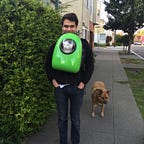Setting Up Facebook Conversion Tracking For Your Music Events
One of the biggest advantages of Facebook advertising is being able to run Website Conversion Ads.
Website conversion ads allow you to target your advertisements towards individuals that are most likely to perform a specific action on your website.
That means if you optimize for an action on your website, like say, “Make A Purchase”, Facebook will automatically serve your ads towards individuals who have a tendency to make online purchases. This means you’re no longer spending solely for engagement (comments, likes, shares) or inexpensive clicks that may or may not result in sales.
It’s what turns advertising campaigns with non-direct metrics like this:
Into advertising campaigns with direct metrics like this:
The biggest advantage of website conversion ads is that Facebook will be able to you what your ROAS (Return on Ad Spend) is.
Knowing your return on ad spend is important because:
- We can learn where we’re not getting a sufficient return on our marketing dollars and allocate budget towards channels that will actually result in more ticket sales
- When advertising on Facebook, we’ll know which audiences are actually driving sales vs. those that aren’t
The end result is that you’re able to increase your chances of selling more tickets and reduce the risk of having a low attendance event!
Below you’ll find instructions on how to set up conversion tracking for two categories of ticketing platforms: Non-Eventbrite vs. Eventbrite.
Implementation With Non-Eventbrite Platforms
STEP 1: CREATING OR FINDING YOUR FACEBOOK PIXEL
Before we install your pixel, we need to make sure it exists in the first place!
Here’s how to get started:
- Log into your Facebook Ads Account
2. Select Business Manager (or Ads Manager) and Click Pixels.
3. Click Create a Pixel.
4. Name your Facebook Pixel.
5. Save your Facebook Pixel ID.
STEP 2: SEND INSTRUCTIONS TO YOUR TICKETING PLATFORM
After you’ve grabbed your pixel code, you can send the following message to your developer to make sure the pixel & relevant events are installed & tracked:
2. Send your ticketing platform rep this:
Hi NAME,
I’d like to run website conversion ads for on Facebook & Instagram for all of my events and need conversion tracking installed.
Could you help me with the following?
1. Installing the Facebook Pixel
[Insert your FB pixel code here]
2. Making sure that the following events are created:
- View Content
- Add to Cart
- Initiate Checkout
- Make Purchase (include value)
Implementation With Eventbrite
STEP 1: CREATING OR FINDING YOUR FACEBOOK PIXEL
Before we can add your pixel to Eventbrite, we need to make sure it exists in the first place! Here’s how to get started:
- Log into your Facebook Ads Account
2. Select Business Manager (or Ads Manager) and Click Pixels.
3. Click Create a Pixel.
4. Name your Facebook Pixel.
5. Save your Facebook Pixel ID.
STEP 2: Adding your Facebook Pixel to Eventbrite
Now that we have our Facebook Pixel ID, we can add it to your Eventbrite event to track all website visits for your Eventbrite event. This is where the unique id in the base code of your Facebook pixel gets place.
This will also enable us to add Standard Events to your Facebook pixel, which will let you know who actually purchased tickets to your events via your ads.
Here’s how you add your Facebook Pixel to Evenbrite:
- Go to “Tracking Pixels” (under Analyze) on your Manage page in Eventbrite.
Select “Manage”, then click “Tracking Pixels” (under Analyze).
2. Copy and paste your Facebook Pixel ID.
3. Add Standard Events to your Facebook Pixel.
You can add your Standard Event to 2 different placements (“Event Listing”, and “Event Register”) and you can use any website actions for your placements. However, we recommend not using the same website action for multiple placements. We also recommend the following website actions for each placement:
• Event Listing → View content
• Event Register → Initiate checkout
Eventbrite automatically tracks Purchases, so there is no need to create this event within Eventbrite.
4. Save.
Click “Save” to complete setting up your Facebook Pixel.
